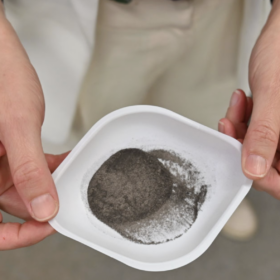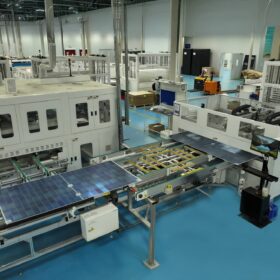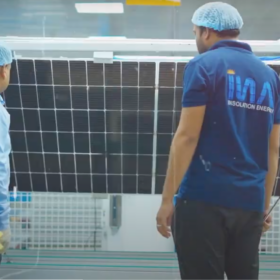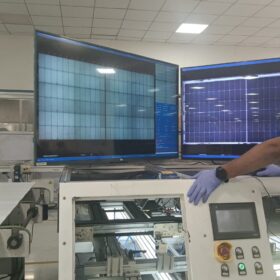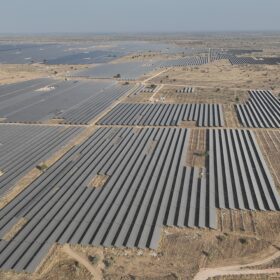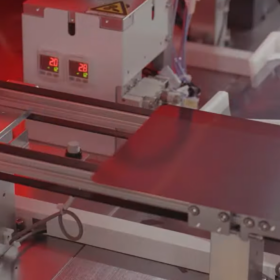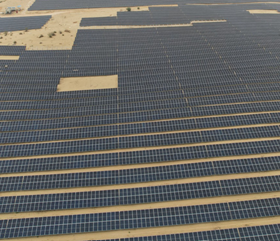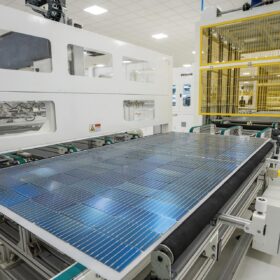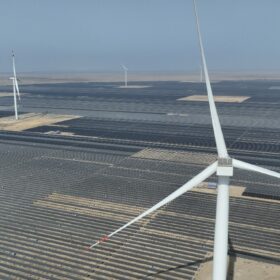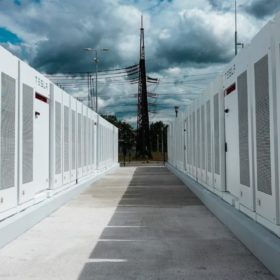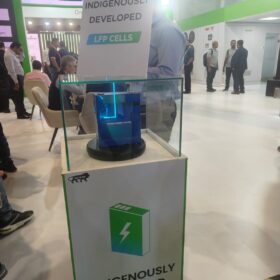New process achieves 97% silver recovery from end-of-life solar panels
Australian researchers have developed a new separation technique that employs the same crushing and flotation principles used in mineral processing to recover more than 97% of silver from end-of-life solar panels.
Avaada Electro credit ratings reaffirmed by ICRA
ICRA has reaffirmed its credit ratings for Avaada Electro Ltd (AEL) and assigned ratings for enhanced borrowing limits, factoring in the company’s rapid scale-up in solar manufacturing and continued support from its parent, Avaada Ventures.
JA Solar, Trina Solar tie for top spot in Wood Mackenzie ranking
Wood Mackenzie’s first-half 2025 solar module ranking places JA Solar and Trina Solar jointly at No. 1 and introduces a new “Grade A” benchmark aimed at procurement and project finance decisions.
Insolation Energy reports INR 1,346.81-crore sales in nine months, records highest-ever monthly revenue
Insolation Energy Ltd (INA Solar) reported consolidated provisional sales of INR 1,346.81 crore for the nine months ended Dec. 31, 2025, surpassing its total sales for the entire previous financial year. The company also recorded its highest-ever monthly sales of INR 354.59 crore in Dec. 2025.
Waaree Energies bags 1.5 GW solar module order; begins production from 3.05 GW PV inverter lines
Waaree Energies Ltd has secured a major order for the supply of 1.5 GW of solar modules and commenced production from its newly installed PV inverter manufacturing lines.
China wafer leaders lift quotes as 2026 module prices may hit CNY 1/W
China’s top wafer makers raised prices on key n-type formats, signaling potential module price rises toward CNY 1 ($0.14)/W in 2026 amid efforts to curb loss-making competition.
India’s 2025 renewable energy sector review: Key highlights and way forward
With record 40+ GW solar and wind installations (solar: 34.9+ GW, wind: 5.8+GW), 2025 has marked yet another high point in Indian annual renewable capacity additions. The capacity additions have been driven by strong project momentum across all solar segments.
Premier Energies secures solar cell, module orders worth INR 2,307.30 crore in Q3 FY26
Premier Energies Ltd, a Hyderabad-based solar cell and module manufacturer and EPC services provider, today announced that it has secured new orders aggregating to INR 2,307.30 crore during Q3 FY26.
Tata Power Renewable delivers 1 GW DCR-compliant solar project for SJVN
Tata Power Renewable Energy Ltd (TPREL) has commissioned SJVN Ltd’s 1 GW AC (1.4 GWp DC) DCR-compliant solar power project in Rajasthan. Executed by TPREL on an EPC basis, the project will supply clean power to Rajasthan, Jammu & Kashmir, and Uttarakhand.
GREW Solar secures 1.5 GW module order from NTPC Renewable Energy Ltd
GREW Solar has secured a major contract from NTPC Renewable Energy Ltd (NTPC REL) to manufacture and supply 1,464.5 MW (approximately 1.5 GW) of high-efficiency solar PV modules for renewable energy projects across multiple locations in Uttar Pradesh. The cumulative contract value stands at INR 2,028.33 crore.
